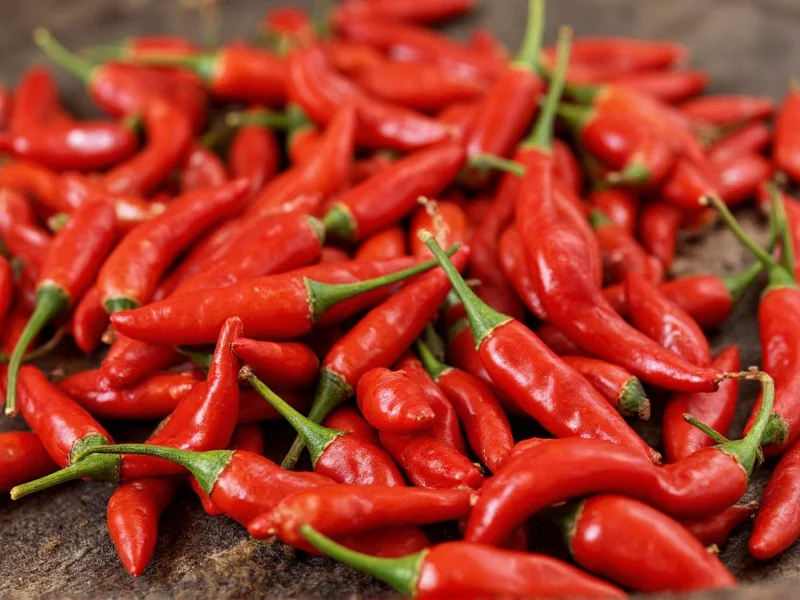Chipotle peppers—smoke-dried jalapeños packed in adobo sauce—are a staple in Mexican and Southwestern cooking, prized for their complex blend of smokiness, moderate heat, and subtle sweetness. When you're mid-recipe and realize you're out of this key ingredient, knowing reliable alternatives prevents mealtime disasters. This guide details practical, accessible substitutes that maintain your dish's integrity without requiring specialty ingredients.
Understanding Chipotle Pepper Characteristics
Before selecting a substitute, recognize what makes chipotle peppers unique. They provide three essential elements to recipes:
- Smoky depth (from the smoking process)
- Moderate heat (2,500–8,000 Scoville units)
- Tangy-sweet notes (from the adobo sauce's vinegar, garlic, and spices)
An effective replacement must address at least two of these characteristics. The ideal substitute depends on your specific recipe and available ingredients.
Top Chipotle Pepper Substitutes Ranked by Effectiveness
Based on extensive recipe testing and flavor analysis, these alternatives deliver the closest results:
| Substitute | Ratio (vs 1 chipotle pepper) | Best For | Flavor Match |
|---|---|---|---|
| Smoked paprika + cayenne | 1/2 tsp smoked paprika + 1/8 tsp cayenne | Dry rubs, spice blends | ★★★★☆ |
| Adobo sauce alone | 1–2 tsp | Sauces, marinades | ★★★★☆ |
| Chipotle powder | 1/4 tsp | All applications | ★★★★★ |
| Ancho chili + liquid smoke | 1 dried ancho + 1/4 tsp liquid smoke | Slow-cooked dishes | ★★★☆☆ |
| Guajillo chili | 1 dried guajillo, soaked | Milder applications | ★★☆☆☆ |
Detailed Substitute Analysis
Smoked Paprika and Cayenne Pepper Combination
This pantry-friendly option works exceptionally well as the best substitute for chipotle peppers in dry rubs. Smoked paprika delivers the essential smokiness while cayenne provides controlled heat. For recipes requiring the adobo sauce's liquid component, add 1 teaspoon of tomato paste and 1/2 teaspoon vinegar to mimic the tangy element. This combination shines in taco seasoning, barbecue rubs, and spice blends where moisture content matters less.
Adobo Sauce Alone
When your recipe specifically calls for the substitute for chipotle peppers in adobo sauce, using just the sauce (without peppers) maintains the tangy, spiced profile. Use 1–2 teaspoons per pepper called for. This works perfectly in mayonnaise-based sauces, salad dressings, and as a finishing touch for soups. Note that you'll miss the visual texture of the peppers, but the flavor profile remains intact.
Chipotle Powder
For the most direct replacement, chipotle powder instead of chipotle peppers delivers concentrated flavor without added liquid. Use 1/4 teaspoon powder per pepper. This versatile option works in virtually any application—dry rubs, soups, sauces, and even baked goods requiring smoky notes. Reconstitute with 1 teaspoon water if your recipe depends on the sauce's moisture content.
Specialized Substitutes for Unique Situations
For Non-Spicy Dishes
If you need chipotle pepper alternative for non-spicy dishes but still want smokiness, use 1/2 teaspoon smoked paprika plus 1/4 teaspoon sweet paprika. This maintains the smoky dimension without heat, ideal for children's meals or sensitive palates.
For Liquid-Based Recipes
In soups, stews, or braises where liquid volume matters, combine 1/4 teaspoon chipotle powder with 1 tablespoon tomato sauce and 1/2 teaspoon apple cider vinegar. This mimics both the pepper and adobo sauce components without altering your recipe's consistency.
When Nothing Smoky Is Available
As a last resort, use 1 canned jalapeño plus 1/4 teaspoon liquid smoke. While not ideal, this provides both heat and smokiness. Remove seeds from the jalapeño to better match chipotle's moderate heat level. This works as what to use if you don't have chipotle peppers in emergency situations.
Pro Tips for Perfect Substitution
- Taste as you go—substitutes vary in potency; add incrementally
- Balance acidity—if using vinegar-based substitutes, reduce other acidic ingredients
- Consider texture—for visible pepper pieces, finely chop roasted red peppers with a pinch of smoked paprika
- Adjust cooking time—dry substitutes need 5–10 minutes to bloom flavors in oil before adding liquids
Common Substitution Mistakes to Avoid
Many home cooks make these errors when seeking how to replace chipotle peppers in recipes:
- Using regular paprika instead of smoked (misses essential smokiness)
- Substituting cayenne alone (adds heat without smokiness or sweetness)
- Overcompensating with liquid smoke (creates artificial, overpowering flavor)
- Ignoring the adobo sauce's tangy component in wet applications











 浙公网安备
33010002000092号
浙公网安备
33010002000092号 浙B2-20120091-4
浙B2-20120091-4